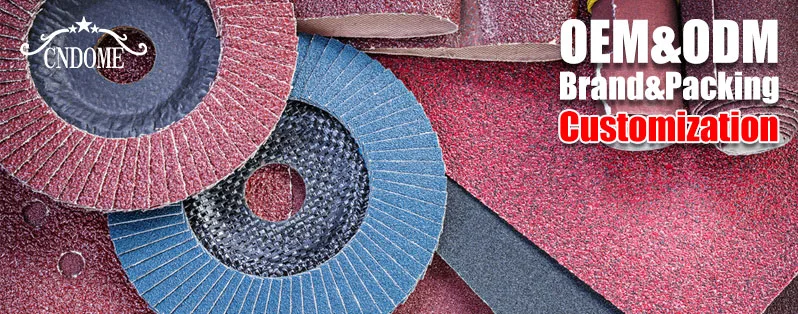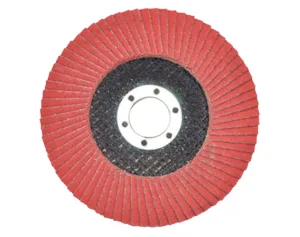Flap discs are indispensable tools in metalworking, fabrication, and woodworking industries, renowned for their versatility and effectiveness in grinding, blending, and finishing tasks. However, selecting the appropriate grit size for your flap disc is crucial to achieving the desired surface finish and maximizing efficiency. In this blog, we delve into the significance of grit size and provide insights to help you make informed decisions for your projects.
Understanding Grit Size:
Grit size refers to the number of abrasive particles per square inch on a sanding disc. It directly correlates with the coarseness or fineness of the abrasive material, determining the aggressiveness of material removal and the final surface finish. In essence, the lower the grit number, the coarser the abrasive, while higher grit numbers indicate finer abrasives.
Types of Grits:
Flap discs are available in a range of grit sizes, typically categorized as coarse, medium, and fine. Coarse grits, such as 36 or 40 grit, feature larger abrasive particles and are ideal for heavy material removal, weld blending, and edge deburring. Medium grits, ranging from 60 to 120 grit, strike a balance between material removal and surface finishing, suitable for general-purpose grinding and blending tasks. Fine grits, including 180 grit and higher, consist of smaller abrasive particles, delivering smoother finishes and finer detail work.
Choosing the Right Grit:
Selecting the appropriate grit size depends on various factors, including the material being worked on, the desired surface finish, and the intensity of material removal required. Here’s a guide to help you choose:
1.Material Type:
Different materials require different flap disc grit sizes for optimal results. For instance, coarse grits are suitable for hard metals like stainless steel or carbon steel, where aggressive stock removal is necessary. Conversely, finer grits are preferable for softer materials like aluminum or wood to prevent excess material removal and achieve smoother finishes.
2. Material Thickness:
The thickness of the material being worked on also influences grit selection. Thicker materials may necessitate coarser grits to efficiently remove stock, while finer grits are better suited for thinner materials to avoid gouging or excessive abrasion.
3. Surface Finish:
Consider the desired surface finish when choosing grit size. If a smooth, polished surface is paramount, opt for finer grits. Conversely, if surface texture is less critical and rapid material removal is the priority, coarse grits are more appropriate.
4. Application Specifics:
Certain applications may require a combination of grit sizes to achieve desired results. For instance, starting with a coarse grit for heavy grinding and gradually transitioning to finer grits for smoother finishes and detail work.
Conclusion:
In conclusion, understanding flap disc grit sizes is essential for achieving optimal results in various grinding, blending, and finishing applications. By considering factors such as material type, thickness, surface finish requirements, and specific application needs, you can confidently select the right grit size to enhance productivity and quality in your projects. Whether tackling heavy-duty metal fabrication or intricate woodworking, choosing the appropriate grit ensures efficient material removal and impeccable surface finishes.



